Understanding the capacity of your fish tank is crucial when you're setting up a new aquarium. It helps you accurately dose essentials like medications and de-chlorinators, and guides you on the number of fish your tank can safely accommodate.
Calculating the volume of a fish tank can be a complex task, but with The Tech Den's Aquarium Volume Calculator, it's never been simpler. Our calculator supports seven popular aquarium shapes, including cubes, rectangles, cylinders, and bow front tanks, making it a versatile tool for all aquarists.
If you prefer to calculate the aquarium size manually, you can use the following formulas based on the shape of your tank:
To calculate the volume of a rectangular aquarium simply times the height by the width by the length:
These are a classic choice, offering ample space and easy maintenance. They're versatile and suitable for a wide range of fish species.
To find the volume of a rectangular aquarium, you need to multiply the height, width, and length of the tank. Think of it as filling up the space within the tank's dimensions.
Volume = Height * Width * Length |
 |
The Bioscape 120 Ultra Clear Glass and Bioscape 60cm Ultra Clear Glass Aquarium Tanks are beautiful additions for any aquarium enthusiast.
These aquariums offer a 360-degree view of your aquatic environment. Their unique shape makes them a striking centrepiece in any room and allows for interesting aquascaping possibilities.
Calculating the volume of a cylindrical aquarium involves a bit of geometry. You'll need to use the formula for the volume of a cylinder, which involves the diameter and height of the tank.
| Full Cylinder | |
Volume = π * (Diameter / 2)² * Height |
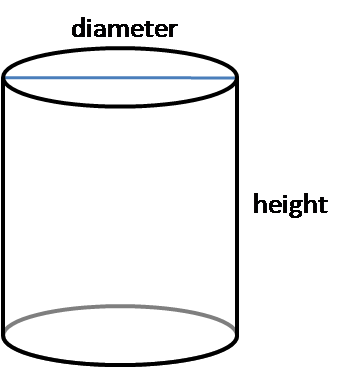
|
| Half Cylinder | |
Volume = π * (diameter / 2)² * height / 2 |
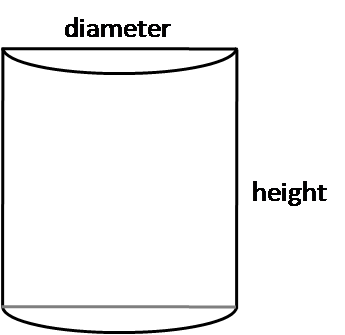
|
| Quarter Cylinder | |
Volume = π * radius² * height / 4 |
|
With their equal sides, these aquariums provide a modern, minimalist look. They're often used for smaller fish species or shrimp, making them a great choice for beginners or those with limited space.
A cube-shaped aquarium is unique because all its sides are equal. Therefore, to find the volume, you simply need to cube the length (multiply the length by itself twice).
Volume = Length³ (or) Length * Length * Length |
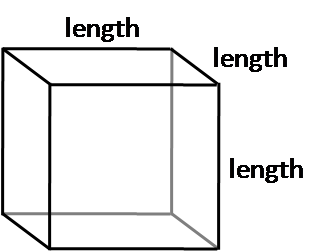 |
The Diamond Beveled Waterbox Cube 20 Aquarium and Waterbox Cube 10 Aquarium are popular choices amongst aquarium enthusiasts.
With their curved front glass, Bow Front aquariums provide a panoramic view of your aquatic world. They add a touch of elegance and sophistication to any space.
Bow front aquariums are a bit trickier to calculate. You need the height, width, length and a full width of the aquarium.
| Bow Front Aquarium Volume | |
|
|
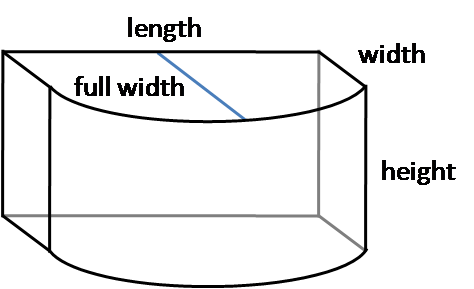
|
| Corner Bow Front Aquarium Volume | |
|
|
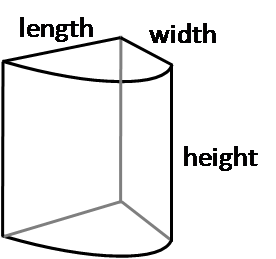
|
Don’t forget to check out the Aqua One Arc Aquarium. With a stylish curve and stunning LED lighting, create a beautiful oasis for your fish.
If you're still having trouble with aquarium volume calculations, don't hesitate to contact our expert aquarists for more information. Visit us in store or call us on 07 5432 3260 to get started on your aquatic journey today!
Knowing your aquarium's volume is important for several reasons. The volume of your aquarium can help you decide what amounts of chemicals to dose. Essentials like medications, water agers and de-chlorinators aid in maintaining the overall health and stability of your aquatic ecosystem.
Yes, the shape of your aquarium does impact its volume. Different shapes have different volumes, even if their dimensions are the same. For example, a rectangular tank will have a different volume than a cylindrical or hexagonal tank of the same size.
Our aquarium calculator can help you determine the volume of your tank, regardless of its shape. Simply enter the dimensions and shape of your tank, and the calculator will do the rest!
One of the most common questions we get asked at The Tech Den is, "How many fish can I add to my tank?" The answer isn't as straightforward as you might think. It's not just about the size of your tank, but also the type of fish and their individual needs.
As a general rule of thumb, you can keep one cm of fish per litre of water. So, if you have a 20 litre tank, you can safely house about 20 cm of fish. Remember, this is a rough estimate and the actual number can vary depending on the species of fish.
If you're wondering about a specific tank size, such as a 10 litres tank, the rule of 1cm of fish per litre still applies. Therefore, in a 10 litres tank, you can typically house about 10 cm of fish. This could be ten 1cm fish or five 2cm fish.
The volume of a fish tank is calculated by multiplying its length, width, and height. If you have a 3ft by 2ft tank, and let's say it's 2ft high, the volume would be 3ft x 2ft x 2ft = 12 cubic feet.
To convert cubic feet to litres, you multiply by 28.3168. So, a 12 cubic feet tank would hold approximately 339.8 litres of water.
Selecting the right aquarium size is a crucial step in your journey as an aquarist. The size of your aquarium will not only influence the number and type of fish you can keep but also the overall health and stability of your aquatic ecosystem.
When deciding on the size of your aquarium, consider the following factors:
1. Space Availability: Measure the area where you plan to place the aquarium. Ensure there's enough space for the tank and its necessary equipment, like filters, heaters, and lighting systems.
2. Fish Species: Different fish species have different space requirements. Some fish, like goldfish, need more space to thrive, while others, like bettas, can live in smaller tanks. Research the needs of your preferred fish species before deciding on the tank size.
3. Maintenance: Larger aquariums can be more stable in terms of water chemistry and temperature, but they also require more maintenance. Consider how much time and effort you're willing to invest in maintaining your aquarium.
4. Budget: Larger aquariums and the equipment they require can be more expensive. Consider your budget when deciding on the size of your aquarium.
Remember, it's always better to start with a larger tank if possible. It provides more room for your fish to swim and grow, and it's easier to maintain stable water conditions.
Want to take your marine tank to the next level? Make sure you have the right combination of filters, air pumps, lights and heaters and ensure that your aquarium stand is stable and in a temperature neutral location. Read our guide on starting a home aquarium or get in touch with our friendly team to set up the best aquarium for yourself and your aquatic pets.